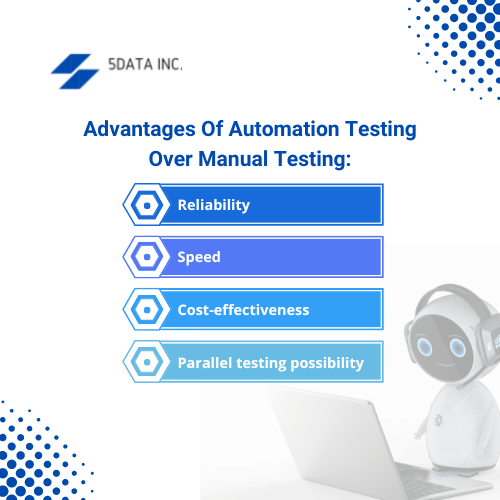Testing is performed either manually or through automation. When a tester tests the software or application from the point of view of an end-user by manually executing tests and running reports without using any automation tools, it is called Manual testing. Automated testing tools like Selenium WebDriver, Lambda Test, Playwright, and more are used in automated testing.
Advantages Of Automation Testing Over Manual Testing
Though automation testing cannot completely replace manual testing, it is more advantageous than the latter in several ways. A 2020 McKinsey and Co. survey found that 66 percent of companies have started scaling automation technologies across various business processes. The automation market is increasing more than ever, and the most common reasons are explained below.
Reliability:
Manual testing is done manually without any tools, due to which there is the scope of human error. As automation testing is machine-run and performs the same action repetitively, it gives less scope for errors, due to which it is more reliable than manual testing.
Speed:
A tester considers various scenarios called test cases while testing the product. It takes more time to execute the test cases in manual testing than it takes to execute in automation testing.
Cost-effectiveness:
Though the initial investment is larger in automation testing because of the purchase of automation testing tools, there is no further investment required in automation testing. Hence it is more cost-effective. Manual testing may not cost much initially, but it is costlier in the long term due to the necessity of more human resources.
Parallel testing possibility:
It is possible to test multiple aspects of the software parallelly by running an automation testing tool. In contrast, checking only one test case simultaneously in the manual testing method is possible. Manual testing is, therefore, more time-consuming than the automation testing process. If more test cases require simultaneous testing by manual testing method, more human resources are required, thus, more expensive.

Applicability Of Automation Testing
You could choose between manual and automation testing based on the scenario of what you want to test. Automated tests are generally preferable for repetitive tasks, long-running projects, or applications needing constant upgradation. For one-time programs or short-term projects, manual testing is preferable.
Any good performance testing company would recommend that automation testing is preferable to manual testing for the following testing scenarios.
Regression testing:
It is the testing of an already well-versed application after making some modifications to it. It is done to discover any defects or errors caused due to software code editing. It is better to do regression testing through automation because it is impossible to do repetitive tests manually on time.
Performance testing:
Performance testing is part of non-functional testing. It covers answers to questions concerning the response time of the application, its scalability regarding the load it can handle, resource-utilization level, and stability under varying loads.
Load testing:
Some applications must operate under heavy load when many users access them simultaneously. Applications like flight ticket booking or media apps with live shows are a few examples in this category. Preventive load testing could prevent bug fixes and system breaks and avoid real-time revenue loss. Load testing is best done through automated testing.
Usability testing:
It is done to find how user-friendly the product is and whether it abides by user requirements.
Furthermore, other types of testing, including volume testing, compliance testing, portability testing, stress testing, and disaster recovery testing, are done through automation testing. Interestingly, a few types of tests, including acceptance tests, could be either automated or done manually.
Manual Testing
Like every coin has two sides, manual testing has some advantages over automated testing, as listed below.
- Manual testing has low initial start-up costs, unlike automation testing, which requires some financial investment to set up the tools.
- All products or applications are suitable for manual testing without special coding requirements.
- A manual tester need not know programming or automation tools, while the automation process requires the tester to know to program.
Only manual testing can be used for some processes, including those listed below.
Black Box testing/Exploratory testing:
It is a powerful testing method in which testing is done only from an end-user perspective without knowing the internal software structure or coding. For example, if it is a shopping app, it should show products as per the client’s requirements mentioned in the filters.
Ad hoc testing:
Random testing of an application to check if it is working as required without any errors is called ad hoc testing.
Module testing:
The developer performs module testing or user interface testing to check if the source code is working properly.
The Best Testing Services For Your Projects
We understand that a lot of testing goes into the appliances and gadgets we use today. All the software we use in our televisions, mobiles, and many other applications would have been tested vigorously to present an error-free end product. If you have a dream project waiting in the testing phase, it is time to avail yourself of the best automation testing services. 5Data Inc provides various testing services and is a top mobile performance testing service provider for your business needs to make your digital dreams come true.

Priyamvada
Author
